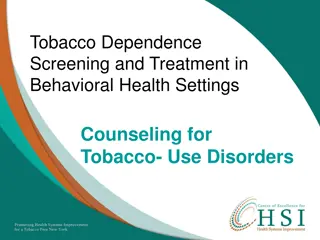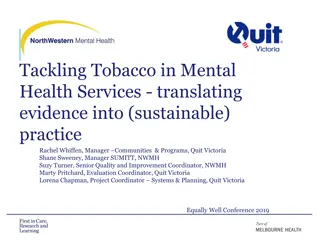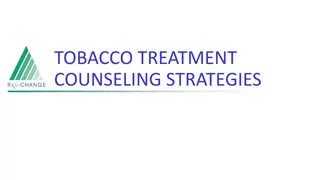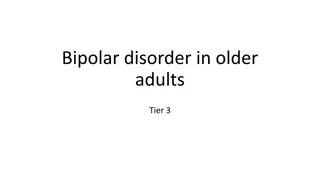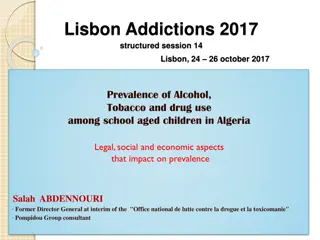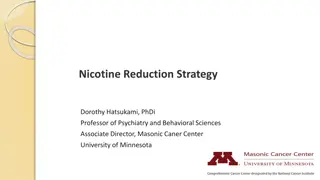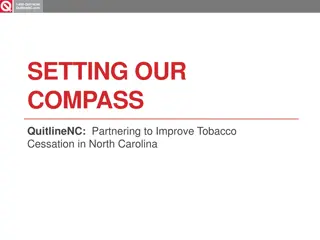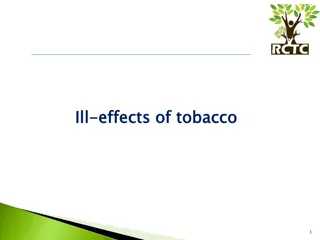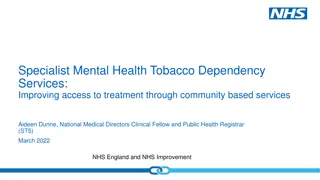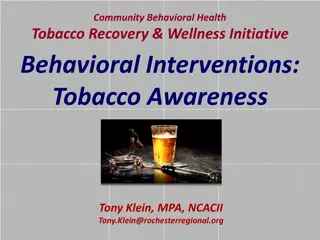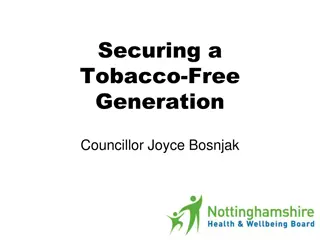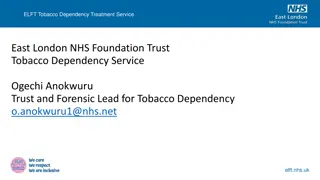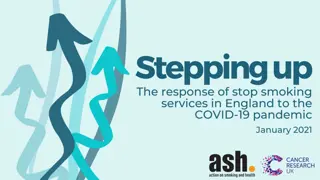Understanding and Treating Tobacco Use Disorder with Dr. David Mendez, MD
Explore the risks associated with tobacco use disorder, learn about nicotine withdrawal, treatment options, and behavioral modifications for tobacco cessation. Discover the impact of tobacco on various health conditions and ways to break free from the addiction through pharmacotherapy, counseling, and support services. Enhance your knowledge on varenicline, bupropion, nicotine replacement, and the importance of assessing readiness for change.
Download Presentation

Please find below an Image/Link to download the presentation.
The content on the website is provided AS IS for your information and personal use only. It may not be sold, licensed, or shared on other websites without obtaining consent from the author. Download presentation by click this link. If you encounter any issues during the download, it is possible that the publisher has removed the file from their server.
E N D
Presentation Transcript
Tobacco use disorder David Mendez MD
Learn about nicotine withdrawal. Discuss options for treatment of tobacco use disorder Understand aspects of behavioral modification for tobacco cessation Objectives Learn about varenicline, bupropion, nicotine replacement. Briefly discuss e-cigarettes
Increase risk of MI and other coronary events Heart failure Stroke Peripheral vascular disease Malignancy (lung, head/neck, liver, pancreas, kidney, bladder, uterine, leukemia) Risks with tobacco COPD Type 2 DM Increased risk of infections Osteoporosis Wound healing Up to one half of people who smoke expected to die from a tobacco related illness
Cravings Anger, irritability, frustration Difficulties with concentration Nicotine withdrawal Insomnia Restlessness Anxiety/depression Increased appetite
Behavioral modification Varenicline Treatments Bupropion Nicotine replacement
Assess readiness to change: 5 A s Ask, Advise, Assess, Assist, Arrange Assist: Help formulate a quit plan Identify triggers and areas of high risk use Pharmacotherapy Behavioral Modification Individual or group counseling effective Brief counseling: education around withdrawal symptoms, identify triggers for smoking, identify coping skills to help with triggers, stress management techniques Telephone counseling via the quit line: 1800-QUIT-NOW Texting: SmokeFree TXT program through National Cancer institute
Binds with high affinity and partial agonism at nicotine receptor Patients quit one week after starting medication Highest rate of success compared to nicotine replacement or bupropion Varenicline Safe with co-morbid psychiatric diagnoses Duration: at least 3 months. Can extend up to 1 year Nightmares/vivid dreams Consider removing evening dose
Can increase quit rates up to two fold compared to placebo Prescribe combo NRT (long and short acting) Standard of care Patch + gum/lozenge Patch 7, 14, 21mg doses Provide sustained withdrawal relief x24 hours Remove at bedtime Nicotine replacement Gum/lozenge As needed for control of breakthrough cravings Can combine NRT with varenicline Side effects: GI (N/V, abd pain), headache, local irritation Safe to use in patients with stable CVD
Patches >10 cigs (1/2ppd): 21mg patch <10 cigs: 14mg patch or less Lower dosage as tolerated Gum/lozenges Park against buccal mucosa Avoid acidic beverages (coffee, carbonated drinks) Nicotine replacement Inhaler Puff in short breaths and into back of throat (not into lungs) Helps with behavioral/sensory aspects of smoking
Mechanism: thought to increase noradrenergic and dopamine release 2020 meta-analysis found rates of smoking cessation higher compared to placebo Dosing: bupropion SR 150mg BID Bupropion Start 1 week prior to quit date Side effects: insomnia, agitation, dry mouth, headache Contraindicated in patients with seizure disorder Risk of seizures is dose dependent
Placental abruption, PPROM, placenta previa, preterm labor, low birth weight, ectopic pregnancy Smoking cessation counseling is first line Consider adding pharmacotherapy in addition to counseling for individuals continuing to smoke Pregnancy Add NRT or bupropion, starting at lowest dose possible NRT appears to be safe, efficacy not established Bupropion may be associated with small increase in cardiac abnormalities Avoid varenicline, limited data in pregnancy
Harm Reduction? Tobacco not burned, could be safer E-cigarettes Unsure of long term side effects Not FDA approved for smoking cessation



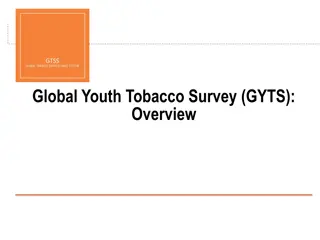
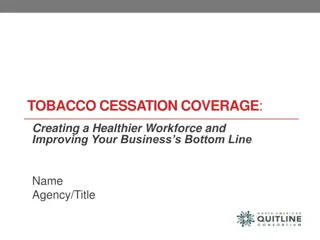
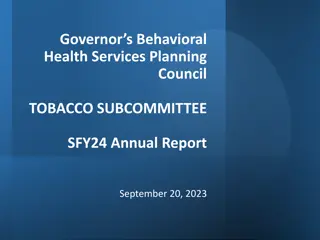
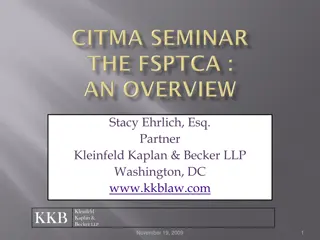
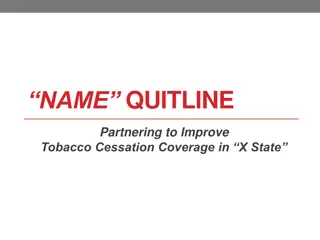
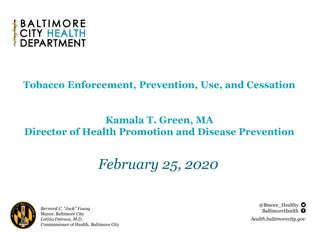

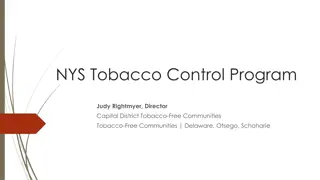
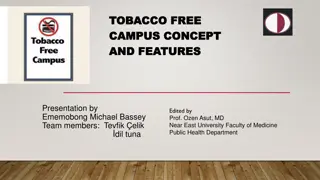
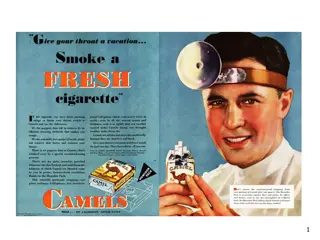

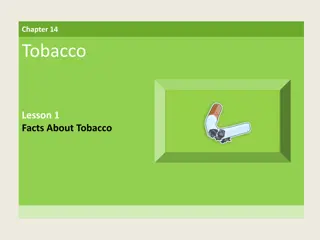
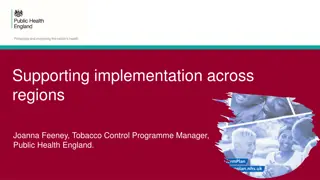

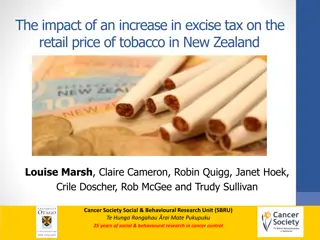

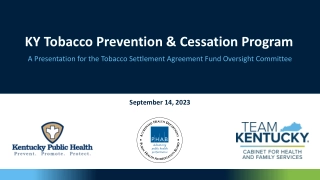
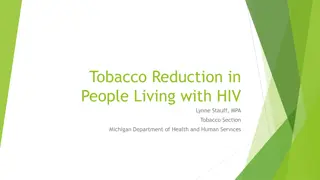


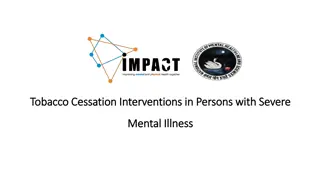

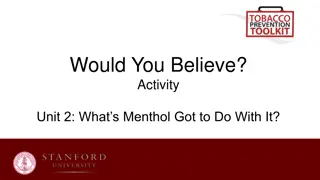
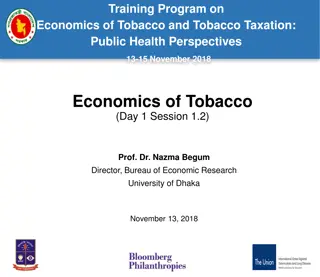

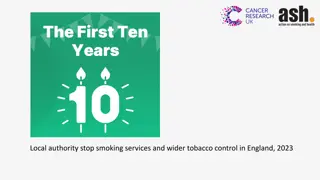
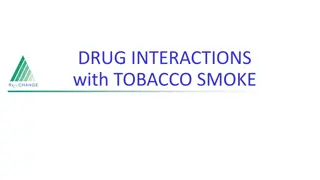
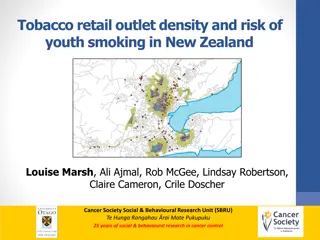
![Protecting Youth Through Tobacco Retail Licensing in [Your County]](/thumb/175307/protecting-youth-through-tobacco-retail-licensing-in-your-county.jpg)

